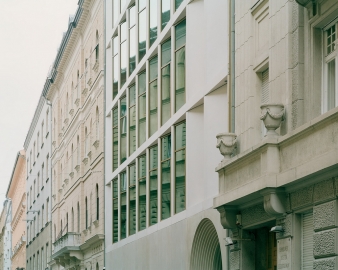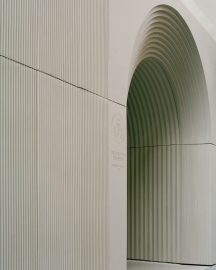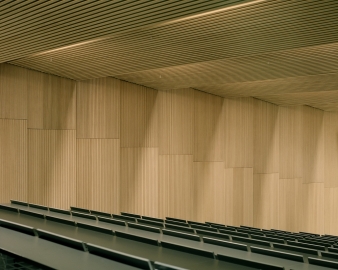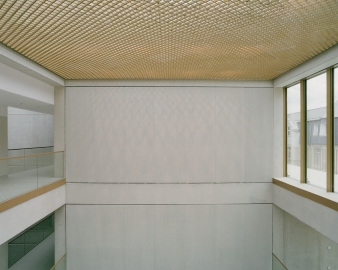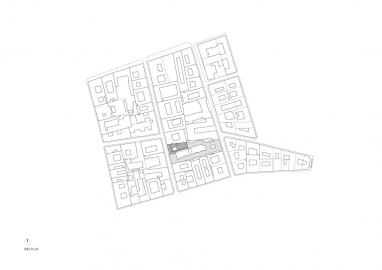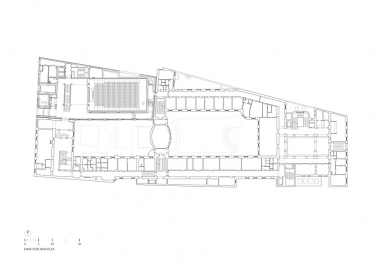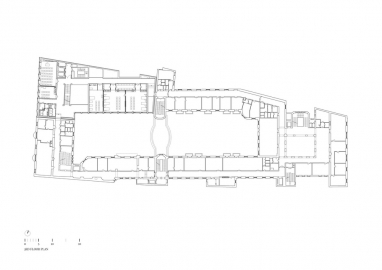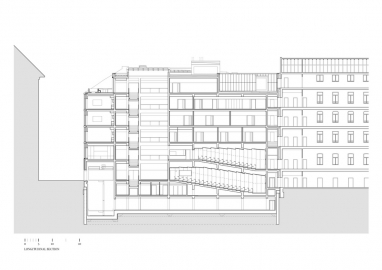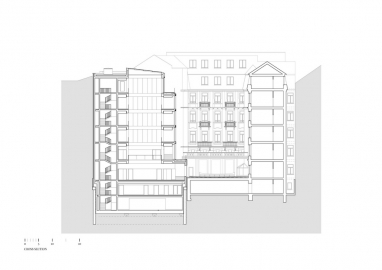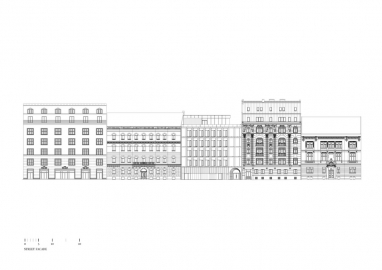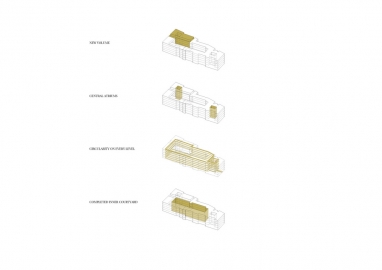Zsuzsanna Kossuth Building of the Faculty of Health Sciences, Semmelweis University
New Educational Building for Semmelweis University - Faculty of Health Sciences, Budapest
Semmelweis University is a leading institution of higher education in Hungary and the Central European region within the area of medicine and health sciences. In 2016 the Faculty of Health Sciences launched a design competition for an extension to a locally listed educational building dated from the early 1900’s. The aim was to create seminar rooms, demonstration rooms and 2 large lecture halls. The open competition was won by Studio Fragment.
The site stretches between two streets in the so-called „palace quarter” of Budapest. The neighborhood contains palatial maisons, as well as important cultural and educational institutions mainly built in 19th and early 20th century.
Concept
According to the main design concept the new volume and the existing building form one coherent complex. The basic design principles are based on the dialogue with the existing building and have been developed from it. The addition creates a completed inner courtyard. The two buildings are connected on every levels and the interior spaces are organized by a central atrium which is the main spatial element of the new wing. The atrium is a modern repetition of the old one. Community spaces surround the atrium and visual connection to the inner courtyard is created on each level that gives an airy feeling of the interior.
The building follows and captures the strong axiality and characteristic rhythm of the facades of the buildings in the neighbourhood. Due to the narrow street the main facade can be seen only by side.
So the zig-zag geometry evokes the shadow effects of historic buildings and gives the building a two-faced appearance in the narrow street. On both the street and courtyard facade the grid is an abstraction that follows the building's own structure and subtly responds to the existing building’s scheme.
The combination of smooth and textured precast concrete elements articulates the facade that matches the colour of the existing building.
Light and neutral materials were used in the internal circulation spaces and communal spaces such as white terrazzo, in-situ concrete, structured wall panels and white perforated gypsum ceilings that give fresh and clean look to the spaces. In the lecture halls, refined acoustic panels with different patterns and oak finish increase the acoustic experience.

